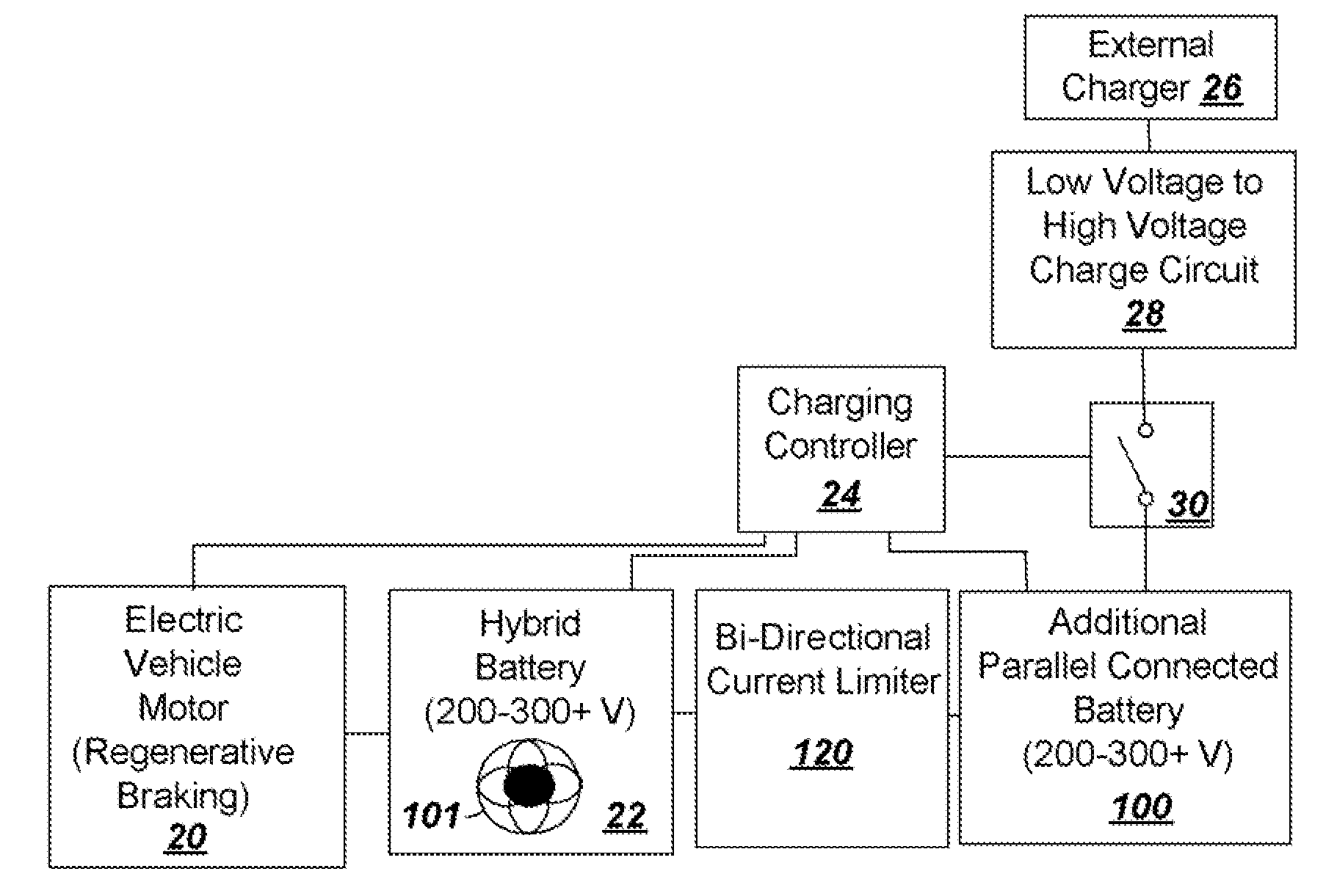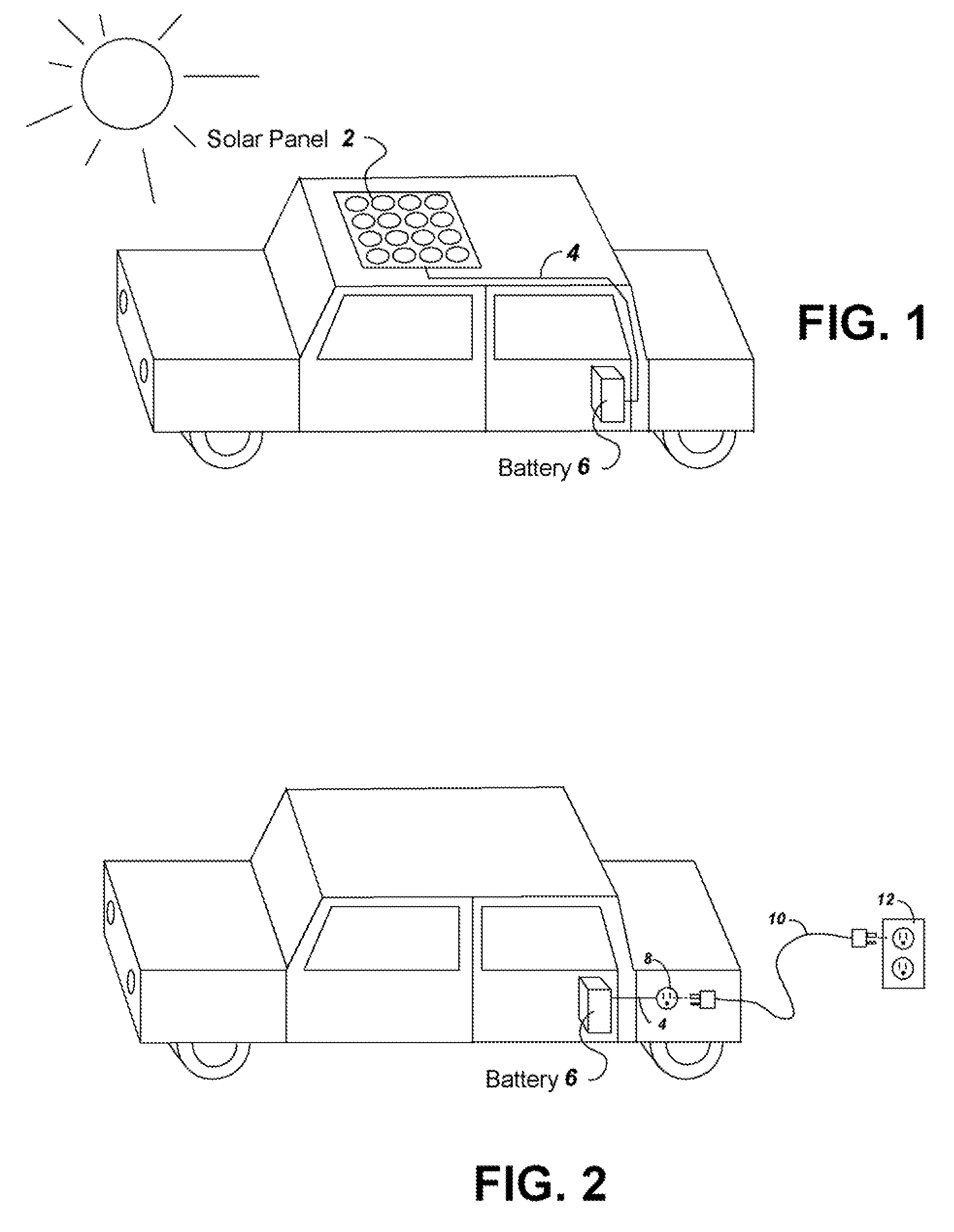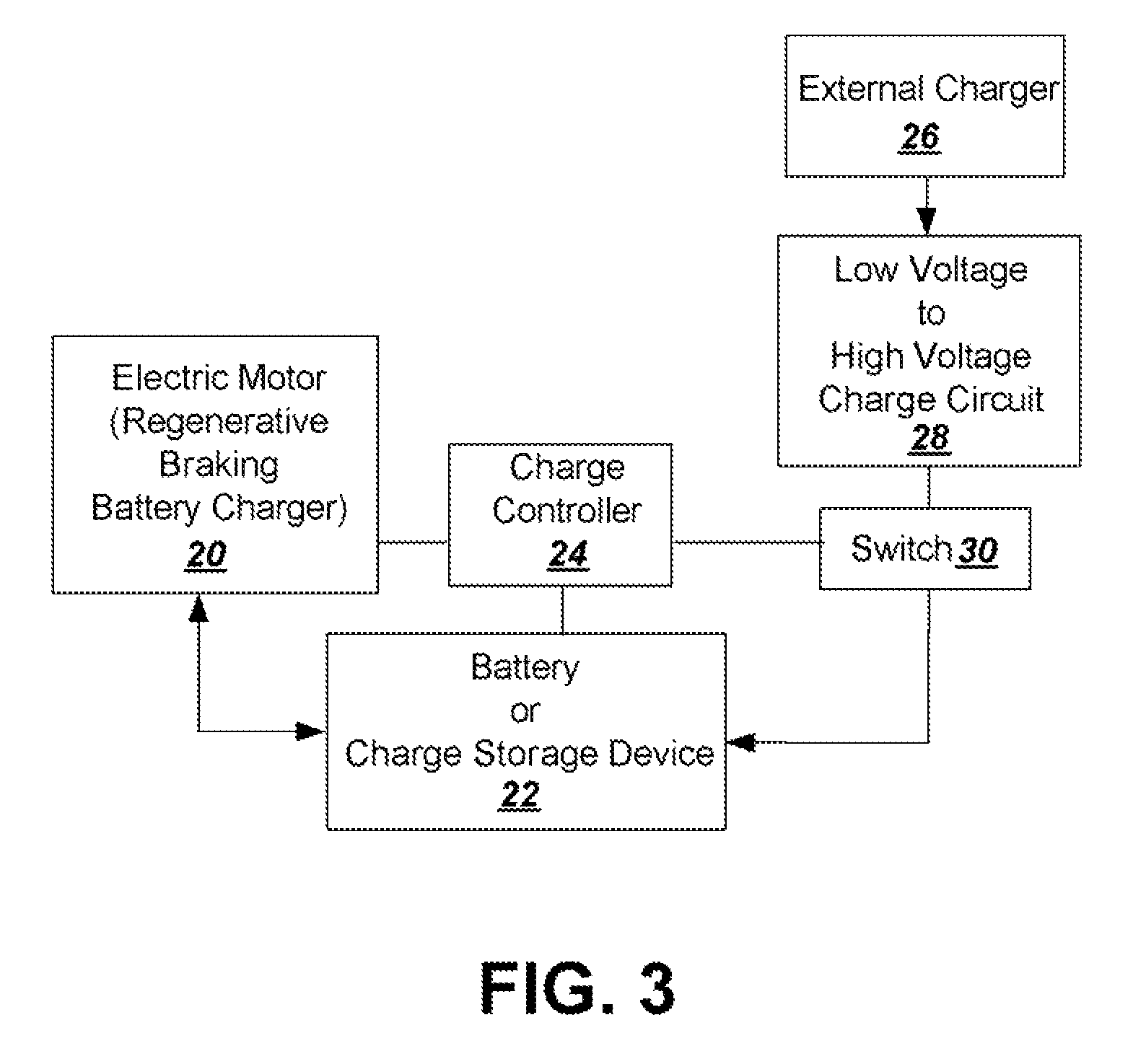Current clamping parallel battery charging system to supplement regenerative braking in electric vehicle
a charging system and current clamping technology, applied in battery/fuel cell control arrangement, light to electrical conversion, safety/protection circuit, etc., can solve the problems of high current generation and heat generation of regenerative braking and driving an electric motor, and achieve the effect of simplifying the battery system and the battery system
- Summary
- Abstract
- Description
- Claims
- Application Information
AI Technical Summary
Benefits of technology
Problems solved by technology
Method used
Image
Examples
Embodiment Construction
I. Low Current Chargers
[0025]Embodiments of the present invention allow use of an additional parallel battery that can be charged by a low current charger while preventing overheating. Overheating of the additional battery can otherwise result due to charging by regenerative braking, or discharging when running an electric motor. The low voltage charger can, for example, be a solar panel as illustrated in FIG. 1, or a plug-in charging system as illustrated in FIG. 2.
[0026]FIG. 1 shows a vehicle illustrating a solar panel battery charging system with a solar panel 2 placed on the roof to charge a battery 6 powering an electric motor of the vehicle. Although shown on the roof, it is understood that the solar panel 2 can be attached to a vehicle in a number of ways. Other non-limiting exemplary places to attach a solar panel 2 to a vehicle include providing the solar panel in a moon roof, attaching the solar panel to a roof rack, attaching the solar panel to the trunk or hood of the ca...
PUM
 Login to View More
Login to View More Abstract
Description
Claims
Application Information
 Login to View More
Login to View More - R&D
- Intellectual Property
- Life Sciences
- Materials
- Tech Scout
- Unparalleled Data Quality
- Higher Quality Content
- 60% Fewer Hallucinations
Browse by: Latest US Patents, China's latest patents, Technical Efficacy Thesaurus, Application Domain, Technology Topic, Popular Technical Reports.
© 2025 PatSnap. All rights reserved.Legal|Privacy policy|Modern Slavery Act Transparency Statement|Sitemap|About US| Contact US: help@patsnap.com



